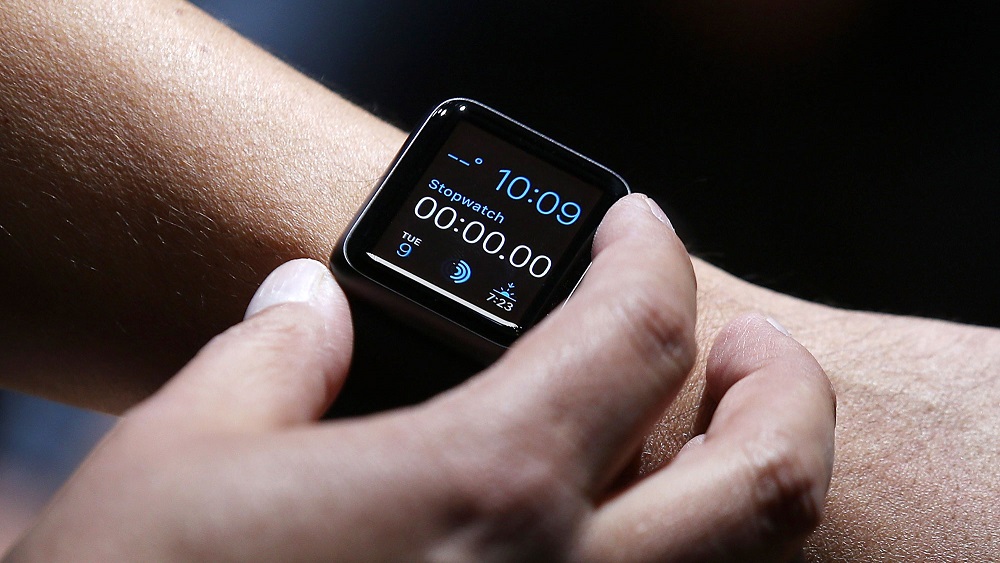
Imagine how incredible it would be to monitor patients’ health in real-time and empower them to partner with caregivers to address anything that’s wrong.
That might have been fantasy just a few decades ago, but today it’s quickly becoming a reality.
“Wearables”, or devices people wear to monitor their health, are exploding in popularity. They’re changing the very nature of how patients interact with their providers—and what it takes for healthcare marketing to be successful.

Image Credit: Forbes
For most of us, our day-to-day health is kind of a mystery. Unless something feels seriously wrong, the only way to see how well you’re doing is to see a doctor and have them measure key vitals.
Things are changing quickly. Now, doctors can send patients home and allow them to monitor their own health remotely. There’s nothing to think about; all you have to do is wear a device that tracks health markers and lets doctors know if something is wrong.
Wearable devices serve many functions, ranging from simple to sophisticated. Here are just a few things they can monitor:
Instead of having to wonder or wait for their next check-up, patients get key information in real-time. It’s then transmitted to the provider, who can access it at any time to see how the patient is doing.
Patients get freedom and peace of mind. Providers get extensive, accurate data to help them cut costs and improve health outcomes. And pharmaceutical companies get a great new way to track the results of clinical trials.
The global market for wearable medical devices is projected to reach $151.8 billion by 2029. This will accelerate as people get accustomed to them, and the sensors become smaller and even more accurate.
Here are just a few ways these devices are changing healthcare marketing:

Photo Credit: YouTube
Traditionally, it was the healthcare marketer’s job to make the right people aware of a product or service and do what it took to get them into the hospital or doctor’s office.
But that was where their role ended. Then it was up to the caregiver to provide the treatment needed (along with any further instructions to avoid problems in the future).
Wearable devices change that. Now, instead of marketing a short term experience with a device or treatment, you’re marketing an ongoing relationship. The patient takes the device home and uses it for months, years, or even indefinitely (in some cases) unless their caregiver tells them otherwise.
This requires you to broaden the scope of your marketing. You still have to make people aware of the device and how it can help them. But you also have to show them the ongoing benefits as it becomes integrated into their daily lives.
Every day the patient wears a device is another opportunity to reassure them they’ve made the right decision. Appeals based on non-intrusiveness, ease of use, simple tracking/accountability, and protecting privacy can help.

Photo Credit: StockSnap
Where’s the first place people go when they think something might be wrong with their health?
It used to be just the doctor’s office because there weren’t any other information sources to turn to.
Now, millions of people are educating themselves online. They read forums, articles, and websites like WebMD to find out what their symptoms might mean, what to expect from others who have gone through similar experiences, and options for treatment.
This means patients are going to their healthcare providers much later than before. It’s up to marketers to find these people online and make relevant content available to them.
By playing a greater role in educating people via content (instead of just trying to sell), you become familiar and build your credibility. Entertaining, educational content grabs attention and establishes you as someone to trust.
Because wearables are so new, many people aren’t even aware which devices are out there, much less what they can do. Showing them what’s possible early on increases the chances of them asking about it when they visit their providers.
Connecting with prospects early is also important because many wearable medical devices are preventable in nature. By monitoring vital metrics and tracking them now, they’ll be able to alert people (and their healthcare providers) when something might be wrong.

Photo Credit: Joe The Goat Farmer
The standard provider-patient relationship is based largely on a “fee-for-service” model. Someone comes into a provider’s office, and for $X, they receive Y service.
Consulting firm Frost & Sullivan points out that wearable medical devices will change this relationship on a fundamental level as the model gradually evolves to something new: value-based care.
With wearables, the patients and providers become partners in ensuring the best possible health outcomes.
Because both parties get access to shared data, they can work together, with the provider making recommendations to tweak medications, lifestyle, and so on to reach the desired result. There might be less in-person interactions between the parties than before (as the devices work to prevent minor issues from becoming serious ones), but there will probably me more interactions overall.
Marketers must shift their focus in order to make providers (their clients) appealing choices in these ongoing, coaching relationships.
Appealing based on what happens after patients get the wearable becomes just as important as getting them in the door. As people get more comfortable with these devices, providers who show they offer open communication, accessibility, and quick responses will stand out as the best choices to deliver a patient-first experience.
Wearable medical devices are disrupting healthcare rapidly. As monitoring expands out of the four walls of the doctor’s office and into patients’ homes, we’re forced to adapt to reach the best health outcomes.
But with these changes come great opportunities to engage people and give them the information they need to make the best choices for their health, and build long-lasting relationships.
Just as wearable devices empower people to take charge of their health, your marketing can empower them to get (and stay) healthy.
